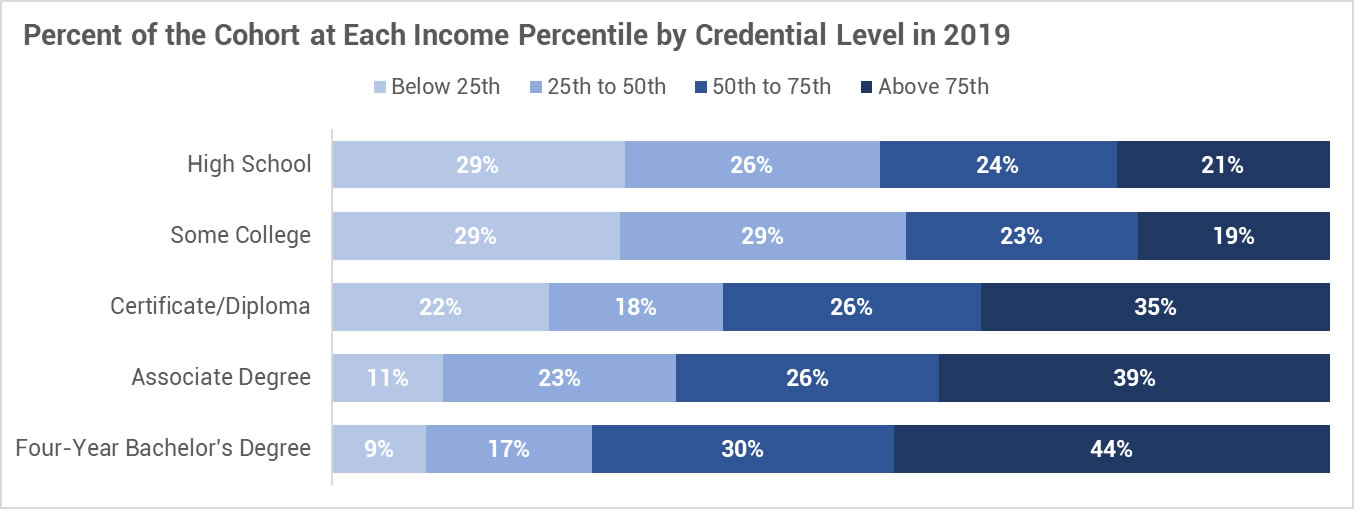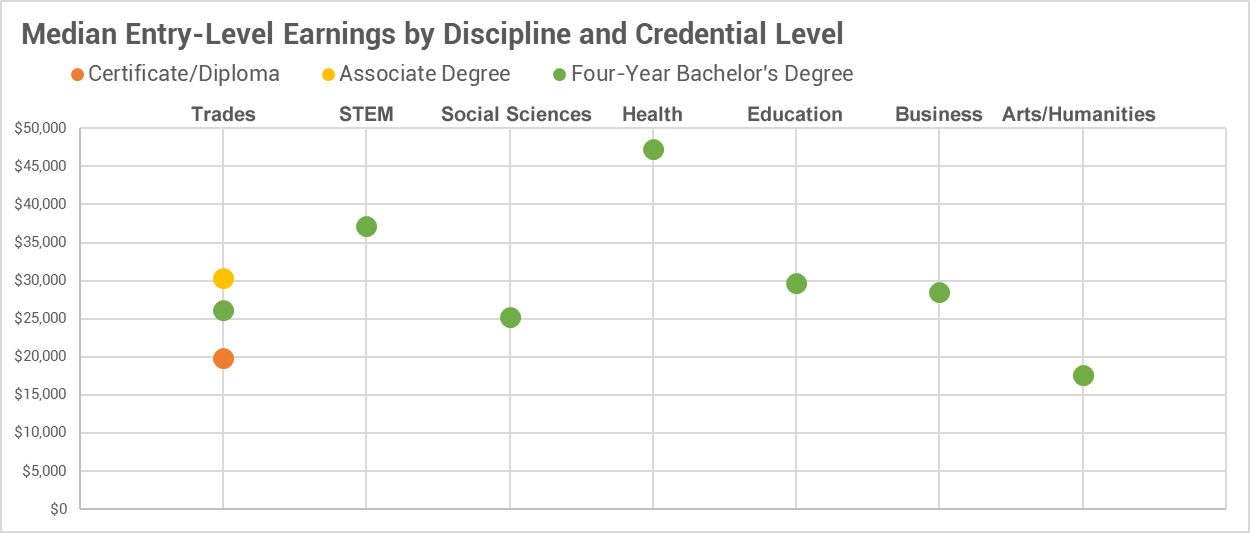Kentucky Higher Education Matters
Looking for the Council's Kentucky Higher Education Matters campaign website? Visit http://kyhigheredmatters.org.
Kentucky higher education matters: The Council's most recent study shows how a college credential benefits both the individual student and the state as a whole.
What is higher education in Kentucky?

When most people think of higher education, they think of an 18 year-old heading off to a university, living on campus in a dorm, going to school full-time for four to five years. However, Kentucky has many options outside of that assumption that fall under the category of "higher education." These can be an adult enrolling in an online degree program part-time, a high school graduate participating in an apprenticeship program or a student pursuing a technical certificate or associate degree at a KCTCS college.
To learn more about the depth and breadth of Kentucky's higher education institutions, view the Council's inventory of institutions:
- Kentucky's public universities and community colleges
- In-state and out-of-state schools licensed by the Council to operate in Kentucky
- All academic programs offered by Kentucky's licensed postsecondary institutions
Benefits of higher education in Kentucky
Those with a college degree earn more than high school graduates.
Immediate earnings
After eight years of being in the workforce:
- High school graduates earned a median annual salary of $29,478
- Certificate/diploma holders earned $37,369
- Associate degree holders earned $38,268
- on-time bachelor’s degree holders earned $41,915

Our research takes into consideration that many college students work while in school, which accounts for the lower levels of income in the graph below. However, once college students graduate within three to six years and begin working full-time, their earnings increase at a much faster and higher rate than a high school graduate.
A closer look at earnings
Overall, each successive level of education improved economic standing. In 2019, 43.7% of four-year bachelor’s degree graduates ranked in the highest income percentile, compared to only 21.4% of high school graduates.

Earnings based on major
Health and STEM majors typically had the highest entry-level earnings at the baccalaureate level, while arts/humanities majors typically had the lowest. However, studies show arts/humanities majors tend to narrow or close wage gaps over time.

Earnings over a lifetime
A true investment amount takes into account total out-of-pocket (net) cost of a college education, as well as the income lost as a result of attending school. Even taking into consideration the cost to attend college, lost earnings and possible student loan interest, college graduates have a greater return on investment over a high school graduate.
Over a lifetime, the median lifetime earnings of a Kentucky bachelor’s degree graduate are $1 million more than a high school graduate, while median earnings for associate degree graduates are nearly $400,000 more.
Overall benefits of higher education to the state and individual
(Not included in the Kentucky Higher Education's Return on Investment Report.)
Health
- College graduates are three times less likely to suffer from fair or poor health compared to a high school graduate.
- College graduates are twice as likely to exercise compared to high school graduates.
- College graduates are three times less likely to smoke compared to high school graduates.
- College graduates are half as likely to suffer from coronary heart disease compared to high school graduates.
- College graduates are half as likely to suffer from diabetes compared to high school graduates.
Source: 2018 Kentucky Behavioral Risk Factor Survey. Kentucky Department for Public Health.
Civic Engagement
- College graduates are twice as likely to volunteer within their communities than high school graduates, often using college to launch their volunteerism. In fact more than 70% of students donate their time to a good cause while in school.
- College graduates are more likely to be engaged in political life and are more likely to vote. Approximately 75% of college graduates vote regularly in local elections, compared to 50% of high school graduates.
- College graduates are three times more likely to serve in leadership roles within their local schools, community and religious organizations.
- Each year, 40% of college graduates give on average $1,300 to charitable organizations.
Source: AGB Guardians Initiative.
Job Preparation
- Nationally, 99% of jobs created after the Great Recession have gone to employees with more than a high school diploma.
- As of 2020, approximately 65% of Kentucky jobs require a postsecondary education or advanced training.
- College graduates are more likely to engage in personal and professional learning opportunities throughout their lives.
Source: Recovery: Job Growth and Education Requirements through 2020. Center for Education and the Workforce, Georgetown University.
Legacy
- College graduates are more likely to read to their children and be engaged in their academic success. Toddlers whose parents had an advanced degree were 12 percentage points more likely to have been read to three or more times more frequently than children whose parents had only a high school diploma.
- Children whose parents had a bachelor’s degree were 12 percentage points more likely to have visited a library at least once in the past month than children whose parents had only a high school diploma.
- Children of college graduates are 13 percentage points more likely to be enrolled in preschool programs compared to those of high school graduates.
- Children of parents with higher levels of educational attainment are more likely than other children to engage in a variety of educational activities with their family members.
- Children of college graduates are twice as likely to visit art galleries, museums, historical sites and other extracurricular learning activities compared to those of high school graduates.
- Children whose parents attended college are 85% more likely to attend college or university themselves.
Source: The College Board.
Join the #KyHigherEdMatters discussion on Twitter.
Last Updated: 12/5/2023
